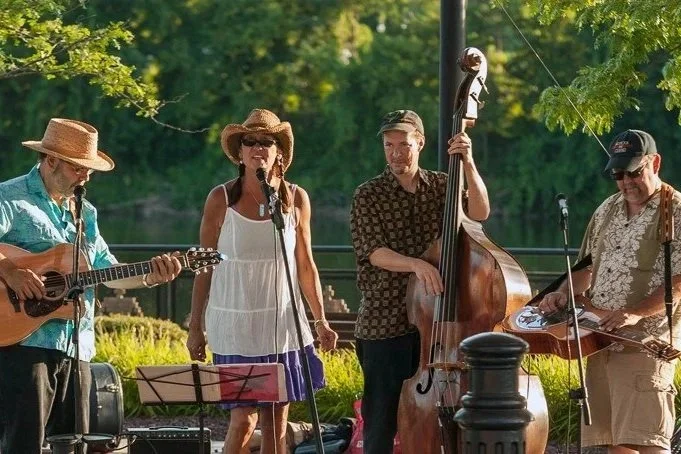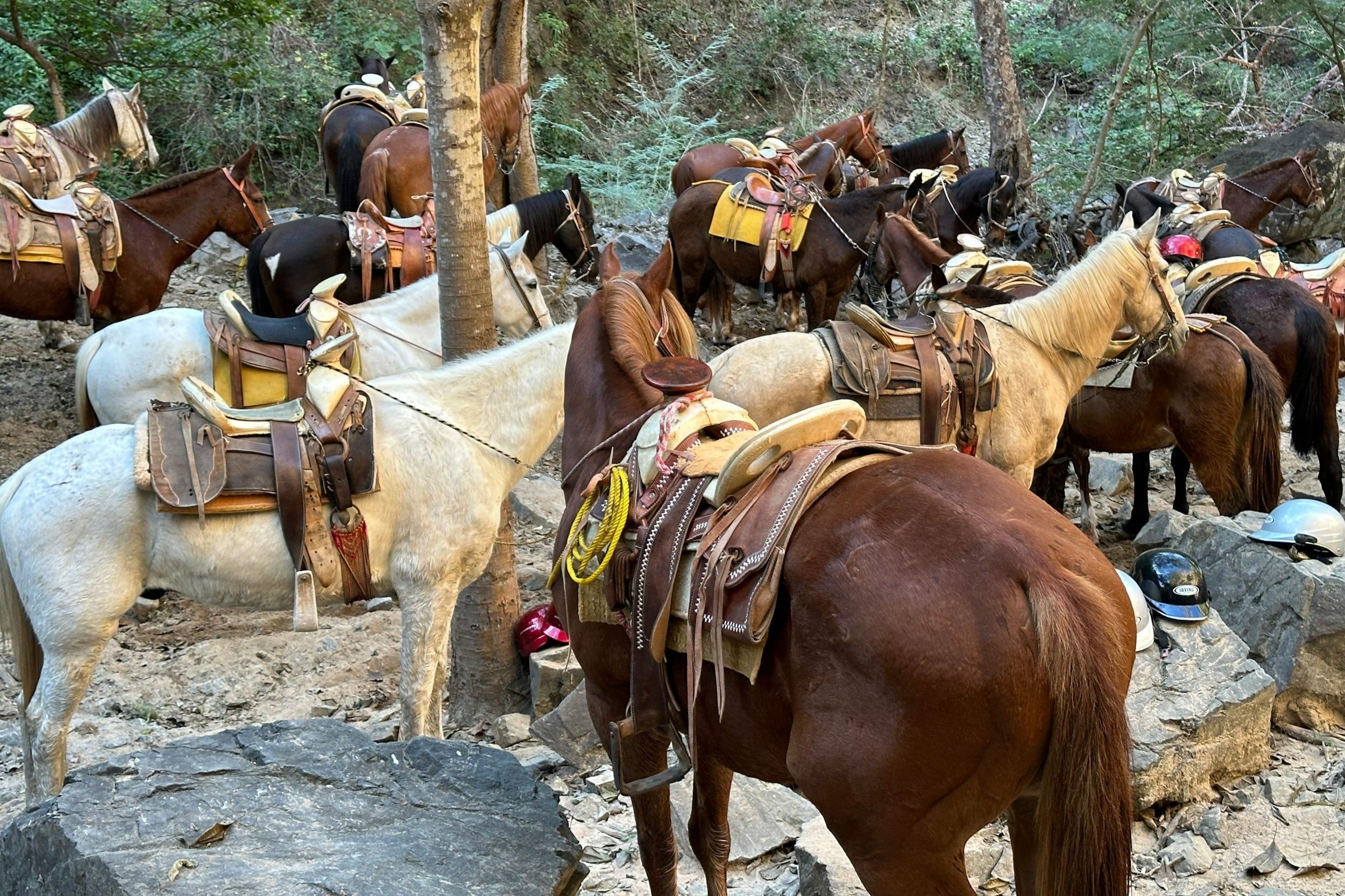Adirondack Women's History Month: Jeanne Robert Foster
An extraordinary life in arts and letters and public service, nurtured in the Adirondack Mountains.
Jeanne Robert Foster 1900.
As part of Women's History Month in March, we are profiling remarkable women in Adirondack history. Last week, we wrote about Anne LaBastille, a true pioneer and advocate for environmental conservation.
This week, we bring you Jeanne Robert Foster, a woman whose life took her from the Adirondack wilderness to New York City, Boston, London, Paris and beyond. She was an adventurer, talented writer and journalist, and then had an impressive third act as an advocate for affordable housing and the elderly in upstate New York.
If you’ve never heard of her, you’re not alone. However, Jeanne Robert Foster was at the heart of the international arts and cultural life of the early 20th century. Her trusted friends included famous writers and poets, such as Ford Maddox Ford, W.B. Yeats, T.S. Eliot, and Ezra Pound.
She was very close to artist John Butler Yeats (painter and father of the famous poet) and she associated with Picasso and other important visual artists of that time.
Foster never lost her deep love for the Adirondacks, which would later prove essential in her career as a respected writer and an advocate for others.
Born Julia Elizabeth Oliver and raised in the Southern Adirondacks.
From her first moments of life, Jeanne Robert Foster (1879-1970) was born to defy expectations. According to one account, at birth on March 10, 1879, the doctor declared her stillborn and left the newborn on a windowsill while he took care of her mother. To the doctor’s amazement, upon returning to the newborn later, she was alive.
Oliver Family farm and Jeanne as a girl, photographed by Osmond David Putnam. Courtesy of Adirondack Research Library of Union College, and Protect the Adirondacks! Inc., Noel Riedinger-Johnson papers (ARL.080)
Her parents named her Julia Elizabeth Oliver, and the family resided in Johnsburg, New York, a small town in Warren County near Gore Mountain and North Creek. Her mother, known as Lizzy and later Lucia, was an aspiring poet and educator with a degree from the Albany Normal School (the predecessor to the University at Albany). She was a teacher in Chestertown, while Julia’s father, Frank, was a lumberjack.
The family struggled financially and moved frequently, first to a farm east of Olmstedville in 1881 that her father rented from his aunt and then to Chestertown in 1886. In 1887, the Olivers sent young Julia to live with a series of relatives when her father's poor financial decisions, sickness, and injuries depleted the family's resources.
An Adirondack Mountain Guide before the age of 10.
Julia’s parents sent her to live with her uncle, Reverend Francis Putnam, at his farm near Crane Mountain (elevation 3,251’). While living at her uncle's farm, Julia cultivated extensive knowledge of Crane Mountain, its flora and fauna, and stunning views of the Adirondack Park.
Crane Mountain. View from Summit with a view of Crane Pond.
Julia would take summer visitors up to Crane Mountain’s summit, charging them 25¢ for her services as a guide (roughly the equivalent of $8 today). She showed her customers how to find rare flowers, like Yellow Lady’s Slippers. Or, she would take hikers to Crane Mountain Pond and show them the cave where they could light a campfire.
After two years at the Putnam farm, Julia briefly lived in North River with another uncle, Jacob Davis. Later, she moved to Griffin, NY, a tannery town on the East Branch Sacandaga River, where she stayed with her third uncle, Erastus Griffin, a Civil War veteran.
Erastus was present at his log home only on weekends, leaving Julia and her cousin, Lena, to explore the area at their leisure. In later years, Julia wrote that she and her cousin ran wild through the country, ”meeting many Adirondack characters my family did not know.”
Julia’s peripatetic youth imbued her with a sense of adventure and a desire to seek new and different experiences. It also sowed the seeds of a lifelong love for the Adirondacks that would manifest itself in meaningful ways later in her life.
Developing a talent for writing at an early age and then a life-changing decision.
Julia’s adventures took new paths when she returned to her parents' home in Chestertown in 1892 when she was 12 years old. In her teens, Julia displayed an early aptitude for writing and published her first magazine article at age 14. Entitled “Autumn Leaves,” her article described the seasonal foliage of Panther Mountain in Chestertown.
Town of Chester School in the early 20th Century. Today, it’s the Main Street Ice Cream Parlor.
Julia also began to assist her mother in the classroom. At 15, she took the teacher qualifying exam and performed so well that Warren County officials waived the age requirement and permitted her to join her mother as a teacher in Chestertown.
In 1896, when Julia was 17, her life was forever changed when she met Matlock Foster, a successful insurance salesman from Rochester, NY, who was visiting his parents in Chestertown. She made the fateful decision to marry Foster, a man more than twice her age (and older than her father), who would ultimately support her ambitions.
After the couple married, they left Chestertown and relocated to Rochester, NY, where Julia changed her name to Jeanne Robert Foster. Matlock encouraged Jeanne to attend college in Rochester and to follow her passion for writing and acting.
From Rochester to New York City and Boston – supermodel, actress, and student.
Matlock Foster was not a healthy man, but his significant financial means allowed the couple to travel frequently to Boston and New York City, where Jeanne eventually relocated in 1900.
That same year, Jeanne turned 21 and met the editor of Vanity Fair. He was so taken with her beauty that he jump-started her career as a fashion model. She was featured frequently and prominently in the magazine.
Jeanne Robert Foster drawn by Harrison Fisher.
Not long after that, Harrison Fisher, a well-known portrait painter who shaped the American perception of feminine beauty in the first 25 years of the 20th century, selected Jeanne as one of his renowned "Harrison Fisher Girls." This event led to her being featured on the front page of Ladies Home Journal in October 1903, in a sketch by Fisher portraying her sitting on a swing.
She also used this time to broaden her education and pursue a passion in the theater. She studied drama at the Stanhope-Wheatcroft Dramatic School and continued to hone her writing talents.
The Fosters moved to Boston, where Jeanne attended Radcliffe College and Boston University simultaneously as a special student. Harvard professor Charles Townsend Copeland was her instructor for three years and remained a lifelong, influential mentor.
A respected international career in writing and journalism.
Despite her prosperous modeling career and academic pursuits, Jeanne never halted her pursuit of a journalism career. She wrote for publications in New York and Boston under various pseudonyms, including Robert Foster, Jeanne Robert, and Jeanne Robert Foster.
Jeanne was a prolific writer, contributing to essential publications and writing serious journalistic articles at a time when men dominated the field.
She helped edit the ten-volume “The Photographic History of the Civil War,” published in 1911. The work is considered a "landmark" and "the bible of Civil War photography." It remains a crucial reference resource for historians and is considered a classic work in the field.
The Flowering of Spring. Courtesy of the Adirondack Research Library, Union College, Jeanne Robert Foster Papers.
In 1913, the year of the famous Exhibition of Modern Art in New York City (aka “The Amory Show of 1913”), Jeanne wrote an article featuring Cézanne, Picasso, Derain, Seurat, and other modernists. This was at a time when the defense of modern art brought forth hostile criticism, showing that Jeanne was willing to take risks in her work.
Also, in 1913, at the age of 34, she became the literary editor of the Review of Reviews, which took her to London. While she was working in England for the magazine, she witnessed the start of the First World War. There are rumors that she also worked as a spy or a "secret correspondent" during this period.
Despite her international travel, journalistic success and pressing obligations as a secret agent, Jeanne returned to the Adirondacks annually to renew her spirit with regular visits back to her mountain roots.
The Adirondacks provide a source of inspiration for Jeanne Robert Foster.
In 1914, Jeanne developed another significant relationship that resulted in another round of life-changing events. That year, she met and developed a special friendship with John Butler Yeats from County Down in Northern Ireland.
John Butler Yeats. Photograph by Alice Boughton.
A respected painter, JB was the father of Nobel prize-winning poet, dramatist, and author Willam Butler Yeats, with whom Jeanne also developed a significant friendship. The elder Yeats wrote in a letter to his son that Jeanne was “extraordinarily pretty and clever.’’ He also added, “It is so rare to find so much really strong intellect [mixed] with kindness and affection.” Yeats admired that Jeanne’s spirit was born in her hardscrabble childhood in the Adirondacks.
JB Yeats and Foster developed a life-long professional respect for one another's work. Occasionally, Jeanne posed for Yeats, and in return, he read and critiqued her poetry. The aging Yeats encouraged Jeanne to write poems about the people and surroundings she knew best: in the Adirondacks.
Her poems began to feature the stalwart Adirondack men and women in an unrelenting landscape that Jeanne had experienced firsthand. Finally, in 1916, Jeanne published her works of narrative verse about the Adirondacks, producing “Neighbors of Yesterday” and “Wild Apples.” They would be followed by "Rock Flower" and a play "Marthe," which won the Drama League prize in 1926
Alfred Kazin, a respected writer and literary critic for The New York Times, the New York Herald-Tribune, The New Republic and The New Yorker, described Jeanne Robert Foster’s poems as "an attempt to recover a vanished time, to record with love and admiration and enduring wonder a life of hardship, endless exertion, and perhaps above all the kind of isolation that used to dominate country life in America."
Despite not achieving great national fame, Jeanne Foster’s well-loved tales of the people who lived in the Adirondacks have placed her firmly among America’s leading female poets.
Beyond the Yeats’: Friend to Ezra Pound, James Joyce, Ford Madox Ford, Picasso, Brancusi and others.
In 1918, Foster met John Quinn, a wealthy New York City lawyer and ardent art collector. Together, they traveled throughout Europe during the early 1920s and associated closely with some of the era’s most important artists and writers.
Foster en route to Europe, early 1920s. Courtesy of the Adirondack Research Library, Union College.
Jeanne Foster’s circle of friends and associates would grow to include people like T.S. Eliot, Ezra Pound, James Joyce, Constantin Brancusi, André Derain, Henri Matisse, and Pablo Picasso. She also had a relationship with the English author and occultist Aleister Crowley.
In 1922, Jeanne accepted the American editorship of the Transatlantic Review, which was published simultaneously in New York and Paris and edited by her friend Ford Madox Ford.
As the elder Yeats's health began to decline, Jeanne stayed by his side and cared for him until he died in New York City on February 3, 1922. JB Yeats’s death had a significant impact on Jeanne, and she published a poem in The New York Times honoring her friend of more than 10 years.
John Butler Yeats' family lacked the funds to transport his body back to Ireland, so Jeanne offered to have him buried in the local cemetery in Chestertown, where he rests to this day next to her.
Act III: A life of service in Schenectady.
Jeanne remained in New York City until she moved to Schenectady in 1928 when her aging family required her care and attention. Remarkably, sources say her husband and father lived until 1933. (Sidebar: That means both men lived to be around 80 years old at a time when their life expectancy was approximately 40 or 45 years old. Wow.)
Jeanne Robert Foster in Schenectady, 1964. Courtesy of the Adirondack Research Library, Union College.
Now middle-aged, with limited resources, Jeanne was about to embark on her next career. For about a decade, beginning in 1928, Jeanne engaged in research on the New York State Constitutional Convention for Dr. George R. Lunn, a former Schenectady mayor.
After witnessing the plight of the elderly in the Adirondacks, she actively focused on providing affordable housing for the needy. From 1938 to 1955, she was the tenant relations counselor for the Schenectady Municipal Housing Authority.
Foster was a vociferous advocate for affordable housing for seniors and founded the Golden Age Club at Schonowee Village, which eventually became the Schenectady Senior Citizen Center.
For her dedication and service, leaders in Schenectady named Jeanne Robert Foster “Patroon of the City,” the highest honor Schenectady bestows upon its citizens. Though she was less known for her early literary and artistic works, Foster kept up her correspondence with literary friends across the globe.
According to Foster's biographers, even after retiring in 1955 at the impressive age of 76, Jeanne was not done yet. She described her retirement as a "Renaissance," using the newfound energy to write poetry and even taught poetry writing to seniors.
Jeanne Robert Foster sketch by JB Yeats.
In 1970, Union College, a highly ranked private liberal arts institution founded in Schenectady in 1795, awarded Jeanne Robert Foster an honorary degree. She died shortly after, on September 22, 1970, at the age of 91, and is buried in the Adirondacks at the Chestertown Rural Cemetery.
Although Jeanne passed away before completing her last book on Adirondack verse, she continued to correspond with and draw inspiration from noted Adirondack conservationist Paul Schaefer.
Jeanne Robert Foster, we salute you and your remarkable life in the Adirondacks and beyond.
SOURCES:
This article required an extensive number of resources and articles to piece together Jeanne Robert Foster’s story (and we’re still worried we haven’t got it all straight). ADK Taste is indebted to the following resources.
Jeanne Robert Foster: Warren County Historians’ Challenge
Jeanne Robert Foster Papers: Union College
The Lady of Crane Mountain: Adirondack Wilderness Advocates
Adirondack History Museum: Jeanne Robert Foster
Portrait of an American Poet: Behan Communications
“Dear Yeats, Dear Pound, Dear Ford: Jeanne Robert Foster and Her Circle of Friends” by Richard Londraville and Janis Londraville














































